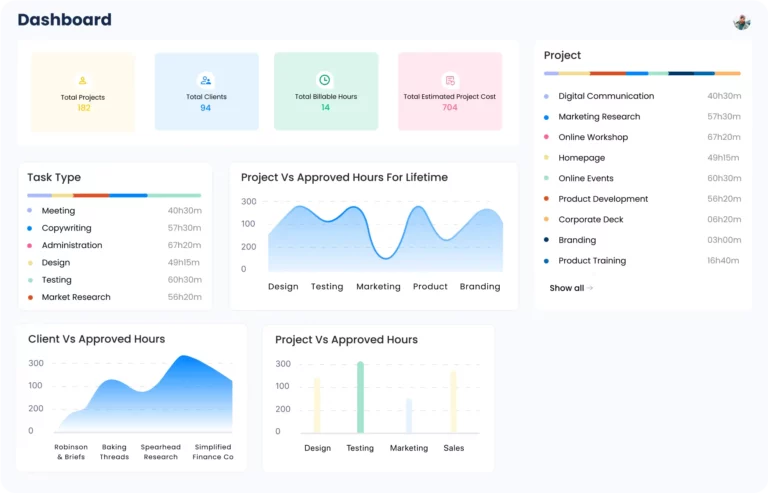If you’ve ever worked in any organization, chances are you’ve come across the term timesheet. But what does it actually mean, and why is it so important for businesses today?
Simply put, a timesheet is a way to track the hours you work. It’s typically used by businesses to keep a record of the time their employees spend on different tasks or projects. For some, it’s just about clocking in and out. For others, it helps with managing payroll, project costs, and even employee productivity.
In this blog, we’ll dive into what timesheet meaning really is, why it matters, and how using the right tools—like time tracking software, hourly tracker apps, and timesheet management systems—can make life easier for both employers and employees.
Why Are Timesheets Important?

We often think of timesheets as something businesses use to calculate pay, but they’re much more than that. Here’s why they matter:
- Accurate Pay: By tracking how much time you’ve worked, businesses can ensure that employees are paid the right amount—whether it’s regular hours, overtime, or paid time off.
- Accountability: Timesheets help employees stay accountable for the time they spend at work. They also allow managers to keep track of how their teams are spending their hours.
- Compliance: Many countries have labor laws that require businesses to keep track of working hours. Timesheets help organizations stay compliant with these regulations.
- Better Project Management: When you track time against specific tasks or projects, you get a better understanding of where time is spent, which can help with budgeting and scheduling.
Timesheet Management: The Old Way vs. The Modern Way
In the past, timesheet management meant filling out a paper form or logging hours into a spreadsheet. While these methods worked, they were often inefficient and prone to mistakes. Fortunately, with today’s technology, things have gotten much easier.
Now, businesses use timesheet software and employee time tracking software to automate the entire process. These tools help employees log their hours more easily, while managers can quickly approve timesheets and generate reports.
Let’s take a quick look at how the process has evolved:
- Manual Timesheets: Employees would write down their hours by hand or enter them into a spreadsheet. While it worked, it was time-consuming and prone to errors.
- Automated Timesheet Software: Today, timesheet management is mostly automated. Employees log their hours using easy-to-use software, and managers can approve or adjust timesheets with just a few clicks.
- Employee Time Tracking Software: Beyond just timesheets, modern software helps track attendance, monitor overtime, and even manage vacation days.
Timesheet Meaning in the World of Employee Time Tracking
When it comes to employee time tracking, timesheets are just the beginning. With modern tools, businesses can track employee hours, tasks, and productivity more efficiently than ever. Here’s how time tracking software and apps make this process easier:
- Real-Time Monitoring: Managers can see what their employees are working on in real time. This can help identify bottlenecks, allocate resources more effectively, and ensure deadlines are met.
- Task-Specific Tracking: Many time tracking systems allow employees to log their time against specific tasks or projects. This means businesses can get a better understanding of how resources are being used.
- Improved Productivity: By having a clear view of how time is being spent, businesses can optimize workflows and improve efficiency.
Time Sheeting: Making Time Tracking Simple
You might have heard the term time sheeting tossed around, but what exactly does it mean? Essentially, time sheeting is just the process of recording the time you’ve worked. While this might sound simple, it can become a hassle if not done efficiently.
With the right timesheet software, however, this process becomes much easier. Employees can quickly log their hours, categorize their tasks, and submit their timesheets with minimal effort. On the other side, managers can approve timesheets, track team progress, and generate reports in just a few clicks.
Why You Need Timesheet Software: The Benefits

Adopting the right timesheet software can be a game changer for both employees and employers. Here are just a few of the reasons why businesses are increasingly relying on time tracking tools:
- Accuracy: Automated systems reduce the chance of human error when logging hours. This leads to more accurate pay and time tracking.
- Simplicity: Most modern time tracking software apps are incredibly easy to use. Employees can log their hours in just a few clicks, and managers can approve them quickly.
- Efficiency: Time tracking software eliminates the need for manual entries, which can be time-consuming. Everything is automated, from logging hours to generating reports.
- Flexibility: With mobile apps like an hourly tracker app, employees can log their hours wherever they are—whether they’re in the office, at home, or on the go.
- Better Insights: With the right software, managers can get detailed reports that highlight where time is being spent, helping to optimize processes and improve productivity.
Hourly Tracker App: The Future of Time Tracking
For companies with mobile or remote teams, an hourly tracker app can be a lifesaver. These apps make it easy for employees to track their hours from anywhere, even while working remotely or in the field. Some features of these apps include:
- Mobile Time Logging: Employees can clock in and out using their smartphones, making it easy to track hours on the go.
- GPS Tracking: Some apps use GPS to track the location where work is being done, providing an added layer of accountability.
- Overtime and Break Tracking: These apps can automatically calculate overtime and break times, making it easier for both employees and employers to stay on top of the rules.
Conclusion
Understanding timesheet meaning is essential for managing employee time and ensuring accurate payroll processing. Whether through timesheet software, employee time tracking, or an hourly tracker app, organizations now have a variety of tools at their disposal to make time management easier, more efficient, and more accurate. By embracing these technologies, businesses can improve operational efficiency, increase employee productivity, and ensure compliance with labor laws.
What is the meaning of timesheet?
A timesheet is a tool used to record the hours worked by an employee. It helps track time for payroll, billing, and productivity analysis.
What is a timesheet used for?
A timesheet is used to track the hours worked by employees for payroll, project billing, and labor cost management.
What are 3 types of timesheets?
-
Manual Timesheets: Paper or spreadsheet-based logs.
-
Electronic Timesheets: Digital forms filled out online.
-
Automated Timesheets: Software that tracks hours automatically.
What’s the best software for time tracking?
Zimyo is one of the best tools for automated timesheet management, offering features like real-time tracking and seamless payroll integration.




